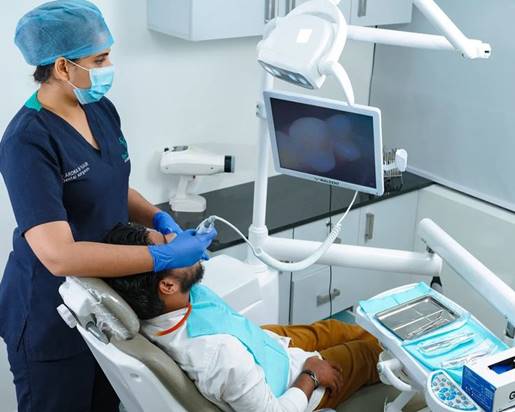The idea of needing dentures might seem far off, especially if you’re still relatively young or haven’t experienced significant dental issues. However, many adults begin to show signs of tooth damage or loss earlier than expected — and addressing those signs promptly can make a major difference in oral health, comfort, and quality of life.
In this blog, we’ll cover the five early warning signs that you might need dentures, why early detection is important, and when to consult a dentist for professional advice.
What Are Dentures?
Dentures are removable appliances used to replace missing teeth and restore the function and appearance of your smile. Depending on your dental condition, you may require partial dentures (replacing a few teeth) or full dentures (replacing all teeth on the upper or lower jaw).
Today’s modern dentures are more comfortable, natural-looking, and functional than ever before — making them an excellent solution for those experiencing tooth loss or decay.
Why It’s Important to Watch for the Signs
Missing or severely damaged teeth don’t just affect how you look — they can impact your speech, ability to chew, facial structure, and even self-esteem. By recognizing early signs and acting quickly, you can avoid unnecessary pain, prevent further tooth loss, and maintain a better quality of life.
- Chronic Tooth Pain or Decay
Persistent toothaches or extreme sensitivity to hot, cold, or sweet foods may be a sign of advanced tooth decay. If several teeth are affected or are too damaged to be restored with fillings, crowns, or root canals, extraction followed by dentures might be the best option.
What to look out for:
- Tooth pain that doesn’t go away
- Dark spots or holes in multiple teeth
- Teeth that are crumbling or breaking easily
When decay becomes widespread, dentures provide a way to restore function and aesthetics without the risk of further infection.
- Gum Disease and Loose Teeth
Periodontal (gum) disease is a major cause of adult tooth loss. In its advanced stage, it can damage the tissue and bone supporting your teeth, causing them to loosen or fall out. If your teeth feel mobile or you notice gaps forming, dentures may be necessary.
Symptoms to watch for:
- Red, swollen, or bleeding gums
- Gums pulling away from teeth (gum recession)
- Persistent bad breath
- Shifting or loose teeth
A dentist can assess the extent of the damage and recommend whether partial or full dentures are needed to restore your oral health.
- Difficulty Chewing or Speaking
If eating has become uncomfortable, or you find yourself avoiding certain foods due to pain or missing teeth, it’s a strong indication that your teeth aren’t functioning properly. Difficulty chewing can also lead to digestive issues and nutritional deficiencies over time.
Similarly, missing teeth can affect your speech, making it difficult to pronounce words clearly or causing you to slur. Dentures can restore proper alignment and function, improving both eating and speaking.
- Multiple Missing Teeth
Losing one or two teeth may not seem like a major concern at first, but missing several teeth can affect your entire bite. Over time, this imbalance can lead to jaw pain, bone loss, shifting of remaining teeth, and even facial sagging.
If you have multiple gaps in your smile, partial or full dentures can help restore harmony to your bite and appearance.
Signs to take seriously:
- Teeth shifting or drifting
- Difficulty biting into foods like apples or meat
- Over-reliance on one side of your mouth
Addressing these problems early with dentures can prevent further complications and maintain the structure of your face.
- Changes in Facial Appearance
Your teeth provide support for your facial muscles. When several teeth are lost, your face may begin to sag or look sunken, making you appear older than you are. If you’ve noticed changes in your facial structure, especially in the lower half of your face, it could be due to lost tooth support.
Dentures not only restore the function of your mouth but also help maintain your natural facial shape, giving you a more youthful appearance.
When to See a Dentist
If you’re experiencing any of the signs mentioned above, it’s time to schedule a dental evaluation. Your dentist will perform a thorough exam, take x-rays if needed, and discuss the best options for your situation. In many cases, early intervention may allow for alternative treatments like crowns, bridges, or implants — but if damage is extensive, dentures may be the most effective and affordable solution.
Don’t wait if you experience:
- Consistent tooth pain
- Bleeding or swollen gums
- Difficulty eating or speaking
- Loose or missing teeth
- Changes in your facial profile
The Process of Getting Dentures: What to Expect from Start to Finish
Modern Dentures: Comfortable, Natural, and Life-Changing
Thanks to advances in dental technology, today’s dentures are more lightweight, natural-looking, and customized for comfort than ever before. Your dentist can create a personalized denture plan that suits your lifestyle, budget, and oral health goals.
Types of dentures include:
- Full dentures (for complete tooth loss)
- Partial dentures (for a few missing teeth)
- Implant-supported dentures (for added stability and bite strength)
Choosing dentures doesn’t mean giving up your smile — it means regaining the ability to smile, eat, and speak with confidence.
Final Thoughts
Tooth loss and decay can sneak up on you, but the good news is that help is available. By recognizing these early signs you might need dentures, you can take action before your oral health declines further.
Whether you’re dealing with chronic dental problems or have already lost multiple teeth, dentures offer a reliable, effective way to restore your smile and quality of life.
✅ Call to Action
If you’re noticing signs of tooth loss or damage, don’t wait for it to get worse. Book a consultation with a trusted dentist today and explore whether dentures are the right solution for your smile.










